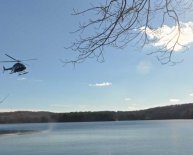
Maryland Department of Environmental Protection
The Department of Housing and Community Affairs enforces the code related to grass height, weeds and lawn maintenance. Property owners, lessees, and others in charge of land should be aware of the requirements in the Montgomery County Code to properly maintain lawns and the exteriors of subdivisions, dwelling units, and nonresidential property. Make sure your yard adheres to the requirements to keep our County attractive throughout the spring and summer months.
 Brief summary of the rules relating to lawn maintenance from the County Code:
Brief summary of the rules relating to lawn maintenance from the County Code:
- Grass and weeds on private property may not exceed 12 inches in height.
- Dwelling unit lawns must be reasonably free of erosion. Shrubbery, trees, vines, hedges, and other vegetation, which includes dead branches and trees, must be maintained by the property owner so that they do not pose a danger to health or safety. Owners of nonresidential property are required to abide by similar ground maintenance requirements.
- A weed is defined as "poison ivy; ragweed; kudzu; Canada, musk, nodding, plumeless, and bull thistles; any plant, except another thistle, identified as a noxious weed under State law; and any other plant which the Director finds by regulation endangers public health or safety if allowed to grow unchecked."
Visit the Department of Housing and Community Affairs to read the Code Enforcement Handbook and view the full regulations regarding lawn maintenance.
Yard Trim
In addition to maintaining grass at an appropriate height, there are environmental related concerns related to handling of yard trim materials.Yard trim is plant material that has grown naturally on properties, including leaves, grass clippings and brush.
The dumping of yard trim materials onto adjacent properties is a serious problem in Montgomery County and is prohibited under the Solid Waste Ordinance.
Don’t blow, sweep, hose, or rake leaves or other yard trimmings into the street, gutter, or storm drain.
Disposing of leaves, grass, and brush along streambanks suffocates and kills valuable plants that are vital for protection against streambank erosion. Dumping also contributes a harmful overload of nutrients to the stream, and depletes the stream of oxygen used by fish and aquatic insects. These impacts degrade the quality of your neighborhood stream and ultimately impact the Chesapeake Bay. Remember: Storm drains are designed to convey stormwater runoff directly to a nearby stream.
Properly Dispose of Yard Trim
For guidelines of how to dispose of your yard trim properly, visit the Division of Solid Waste Services Yard Trim webpage. Before dumping yard trim, consider composting the organic material, grasscycling, or utilizing the County recycling services.






















